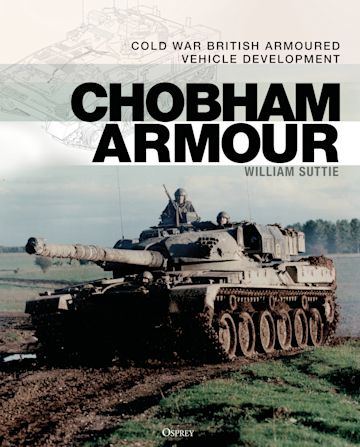I've been meaning to write a review of this book since Christmas so will indulge myself now.
After reading William Suttie's The Tank Factory I had high expectations. I must confess while I enjoyed the book I was left wanting more. The acknowledgments section gave high hopes given the MoD and Dstl cooperation and Suttie's own links within the field, especially when you contrast to David Lister's lament of how much material has been lost in the introduction of his The Dark Age of Tanks. Yet the result seems a bit of a let down, indeed there is no mention of the National Archives at Kew so presumably Suttie has relied purely on Chertsey and Bovington sources.
The Centurion chapter was interesting but offered little in the way of new material and 20 photos which seems too few to really illustrate the wide range of variants and planned variants that are mentioned. We get comprehensive variant lists and a very sketchy potted history but we don't get any dates when these variants entered service or how many were built
The Conqueror chapter was interesting and covers the twists and turns of that programme well.
Chapter 3 Countering the Soviet Threat seemed to offer some real research depth with number crunching and a wider analysis of all the various threads of anti-tank R&D options then being followed. But sadly the ATGW are given scant coverage, Orange William fills one page and we jump to Swingfire in two sentences
The Chieftain chapter is fairly comprehensive and well illustrated, though I was hoping for more testbed photos and a bit more explanation of the later Mark upgrade programmes. The L60 woes are covered - though perhaps with a fairly rose-tinted view of the Cheiftan's woes in this regard. Certainly it seems like other engine options were available but not followed up. Again we get good variant data but no production breakdowns outside of the export Chieftans.
The Novel Concept Studies chapter was frustrating, a few illustrations but not many that haven't been seen before. Contentious 2 is illustrated but barely gets more than a page and nothing at all about its trials. COMRES 75 gets five lines and a picture but offers very little detail of its development or trials outcome at all - there is probably more detail in Budd & Gummett Cold War Hot Science on this topic. The AFV 80 material was all new to me though and actually quite detailed.
The FMBT/MBT80/4030 chapters were all quite short and roll into each other. Handy coverage but again few new images. The two Challenger chapters cover the essentials, the Chally 1 upgrade options were new to me and interesting as were the Challenger 2 Mid-Life Improvement Programme options. Chally 3 just postdates this book but its studies get brief mention.
The Future Concept Studies chapter was very thorough and you get the sense Suttie struck an archive goldmine on this topic.
The light tanks/CVR chapter was good, but there were some inconsistencies here - for example quoting a November 1975 document on CVRT prototypes which seemed to contradict the text later on, e.g no FV104 prototypes planned with fielding planned in 1978 quoted in the 1975 document then reading the FV104 prototype (P22) was completed in 1972 and acceptance agreed in 1976... Quoting source documents always throws up inconsistencies like this and any historian has to be wary of them and explain inconsistencies.
The APC chapter was good - and then we hit another archive goldmine in the Warrior development, 7 pages of detailed text and images, far more than devoted to other programmes in many of the chapters. AFV 80 was another instance spread across two chapters with a ton of material.
The other light tracked chapter is a sort of 'odds and sods' but tails off with Boxer and AJAX sharing one half-page.
The wheeled AFV chapter was good, at last explaining to me why Saladin was so late into service but again production data is lacking, especially for Ferret and images are sparse. Wheeled concepts are covered better in The Dark Age of Tanks I think.
The other AFV's section in Part IV is fairly sparse odds and sods, SP70 in one page of text probably deserves much more. There really isn't much on SPGs beyond Abbot in this book and FOIL gets a few mentions, again The Dark Age of Tanks is better on this topic.
The appendices are good though - the most comprehensive FV number listing I've ever seen.
So overall its a good book but you really need to read it alongside The Tank Factory and The Dark Age of Tanks to get a comprehensive development view.
The research depth seems hit and miss - either a few lines or massive chunks devoted to certain topics. In the main the late-1970s studies seem to have survived in better shape than older material - which would support Lister's findings when he's tried to reconstruct 1950s and 60s material, on the whole I think perhaps Lister has done a better job in some respects with the earlier material.
Image wise, there some nice ones and some good project diagrams but sometimes the coverage is just too sparse, though I suppose smaller picture books like Pat Ware's British Tanks: 1945 to the Present Day in Pen & Sword's Images of War series offer far better riches than can be contained in a book of this size and scope. Maybe the format of the book was partially the reason for the shortcomings, being a small-sized hardback with single-column text and wide margins it felt like quite a short book and quite likely constrained the amount of text and images that could be included.

 ospreypublishing.com
ospreypublishing.com

